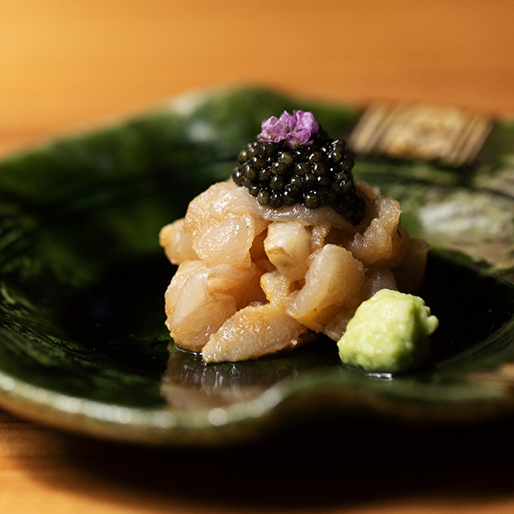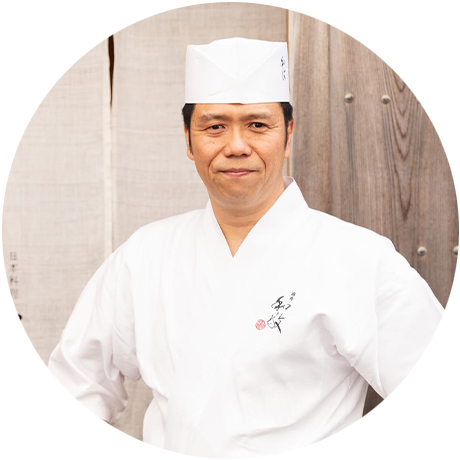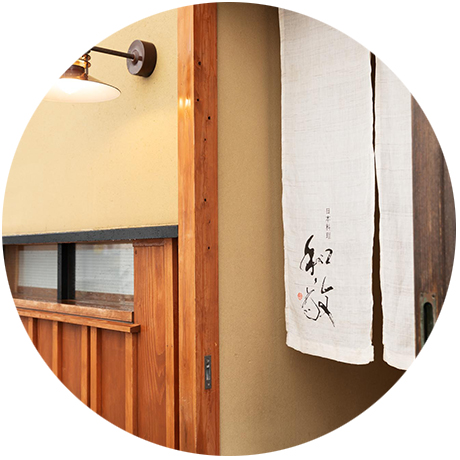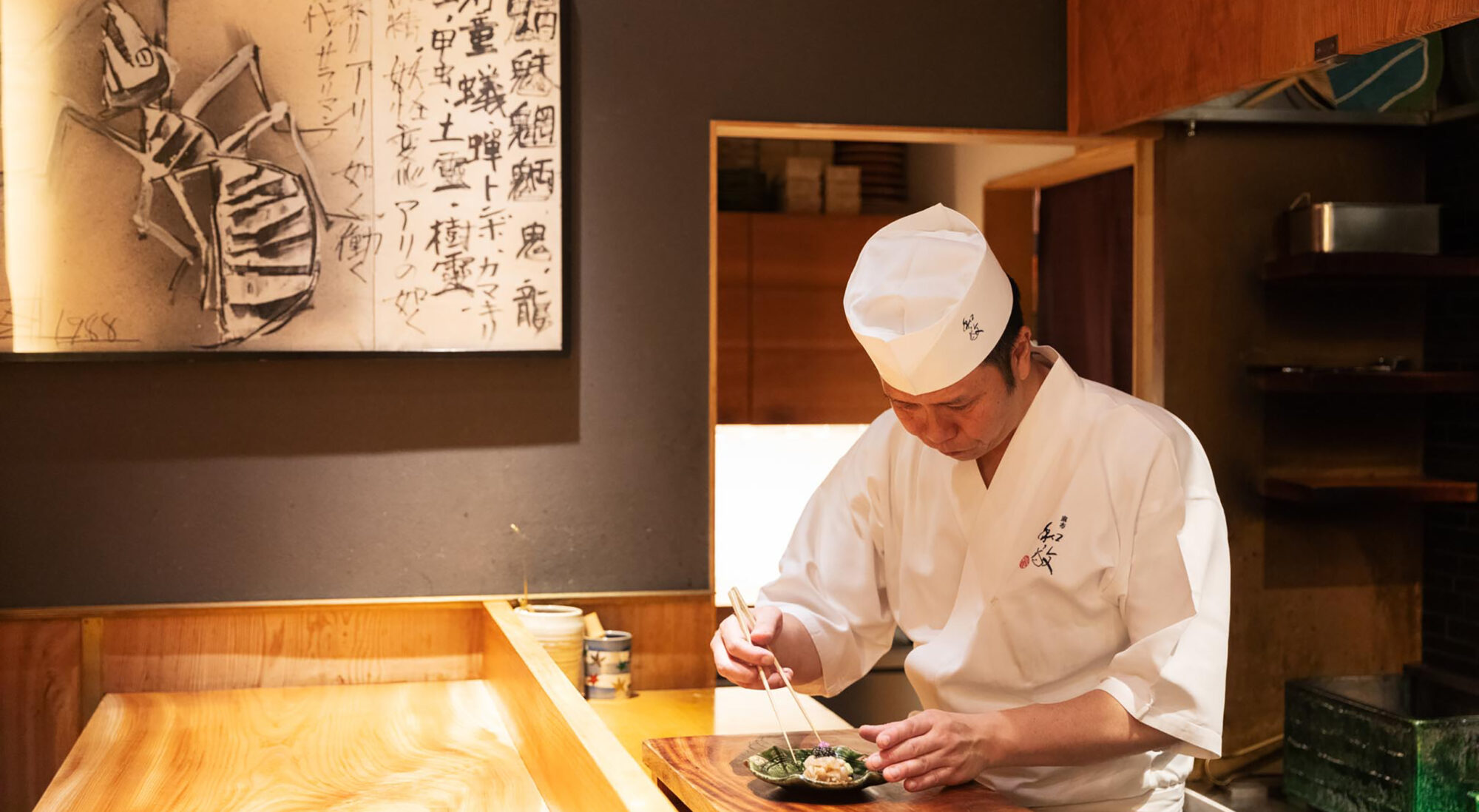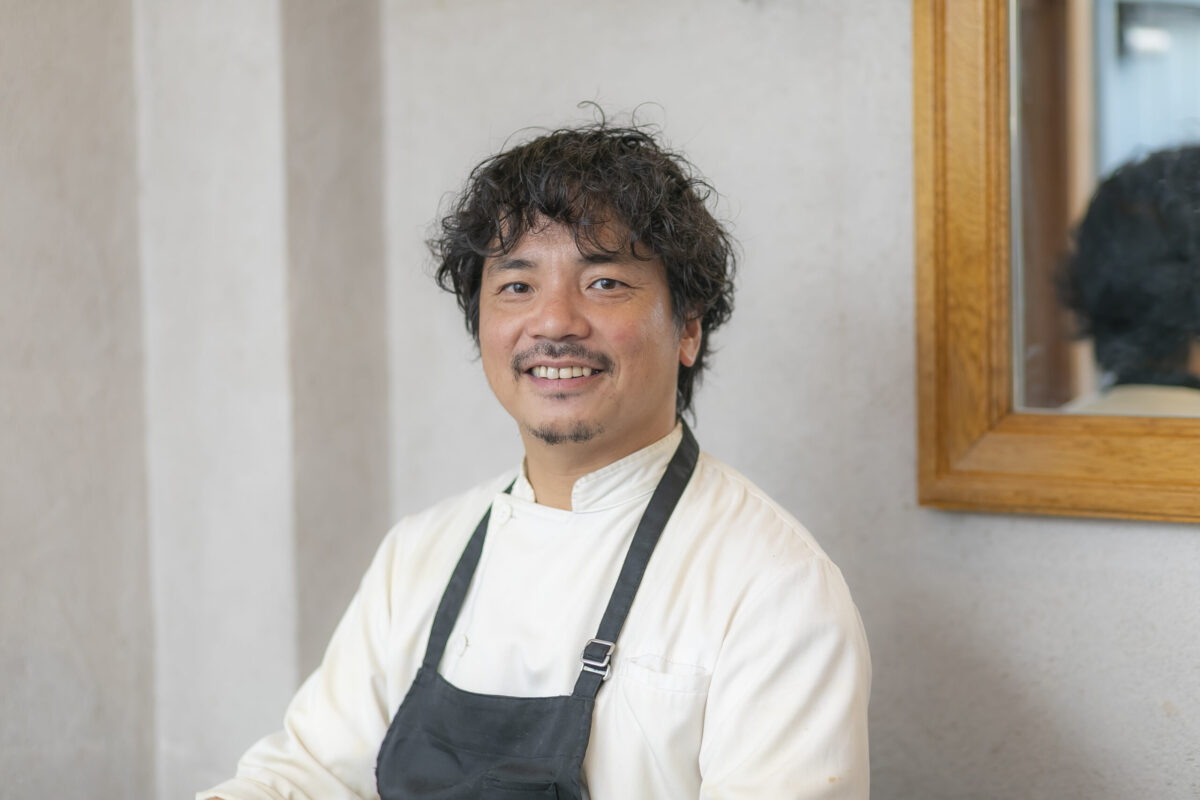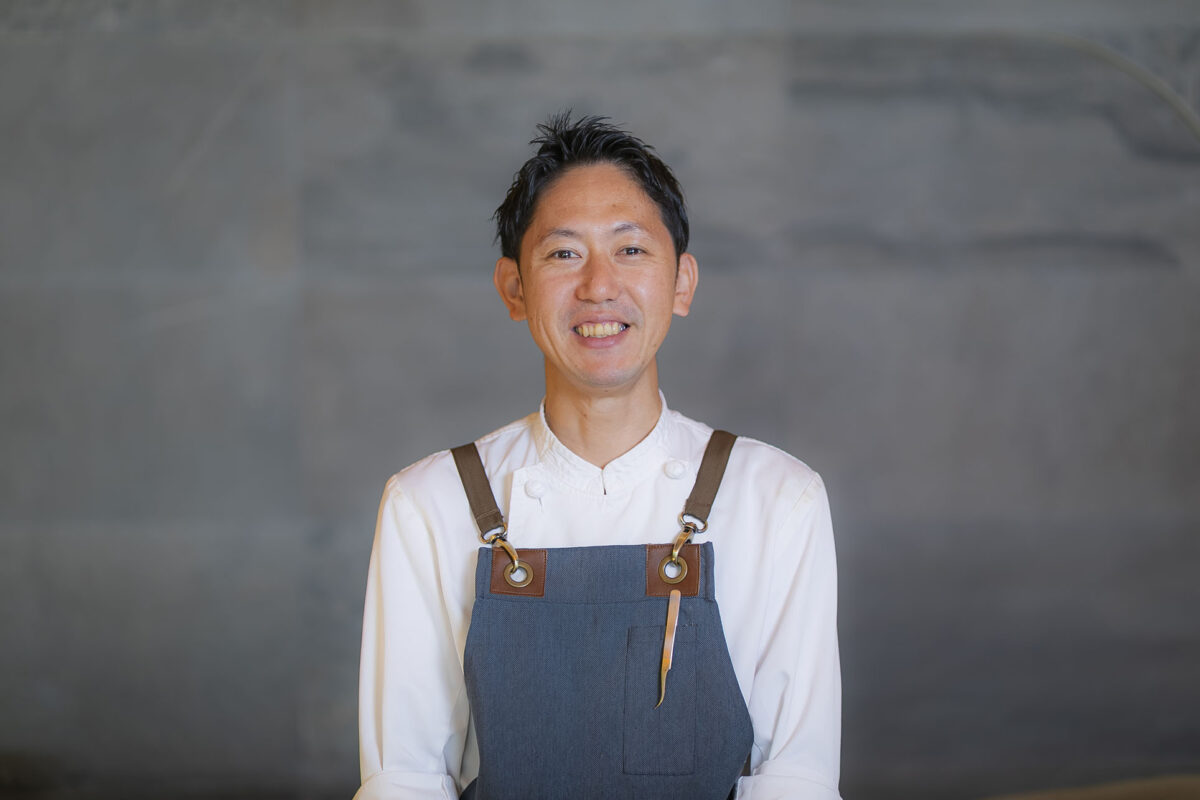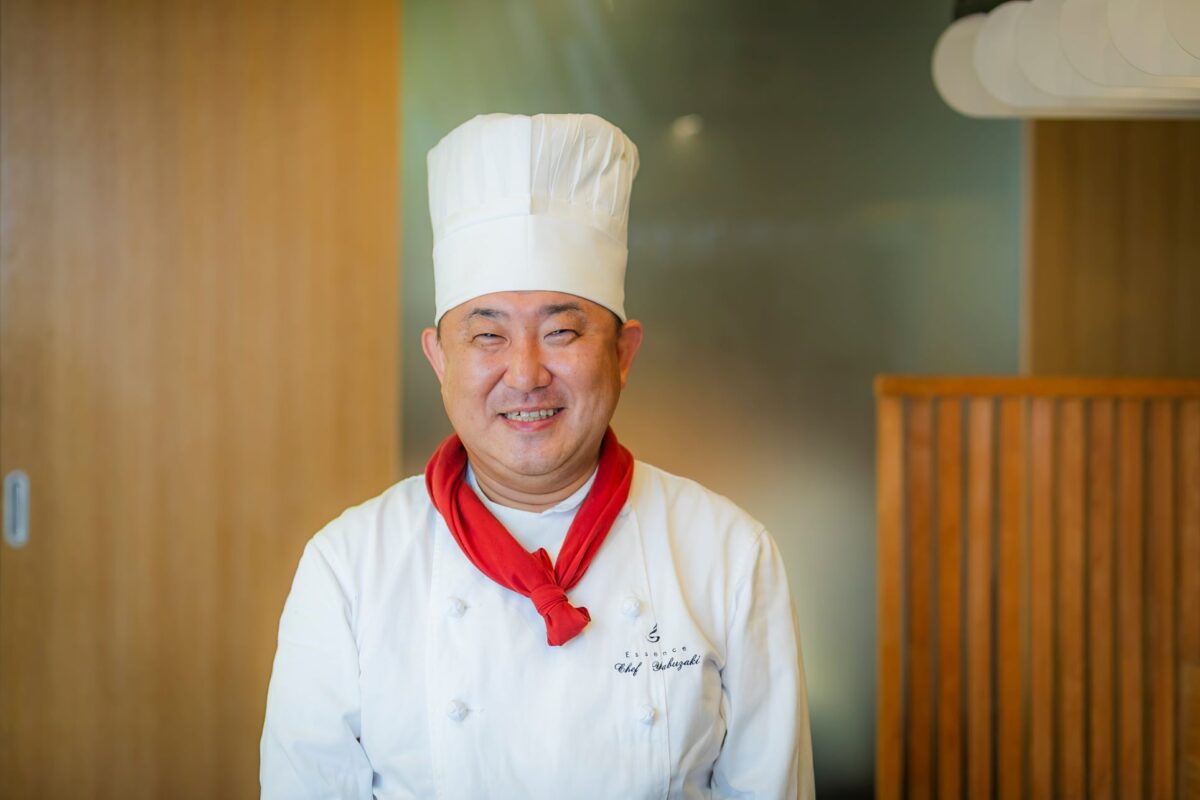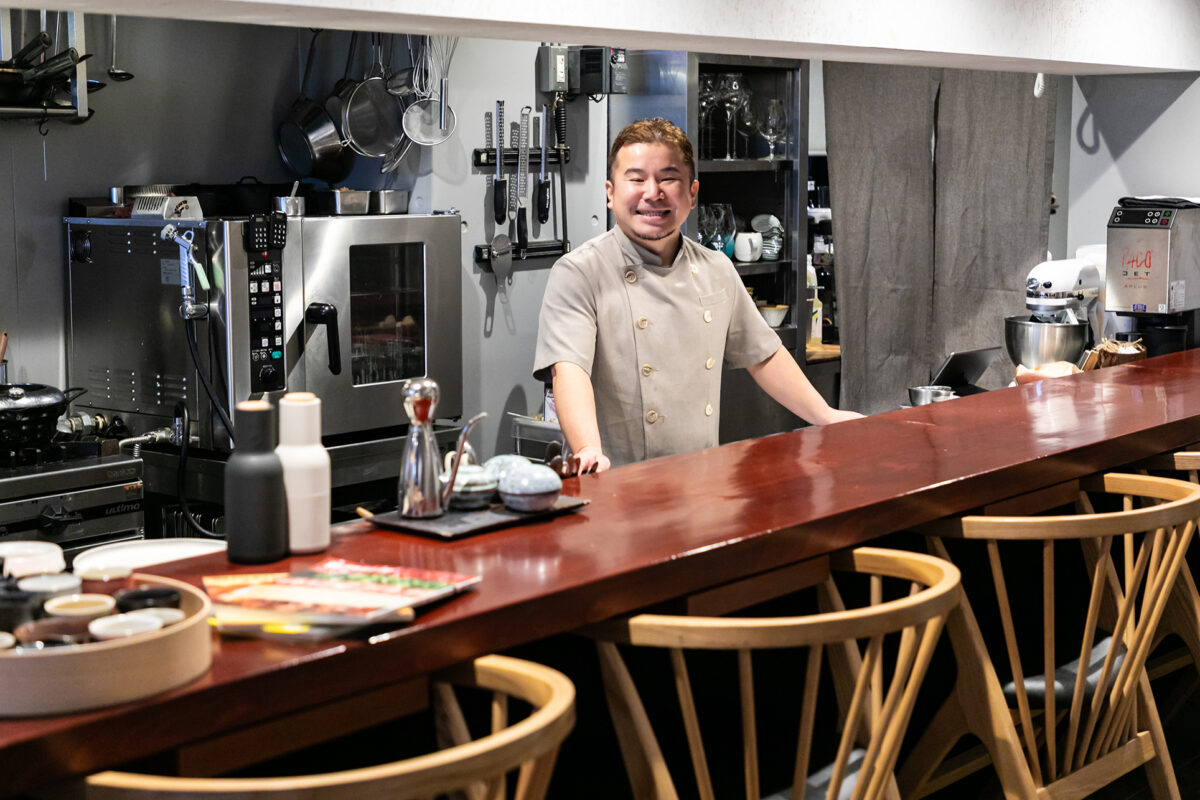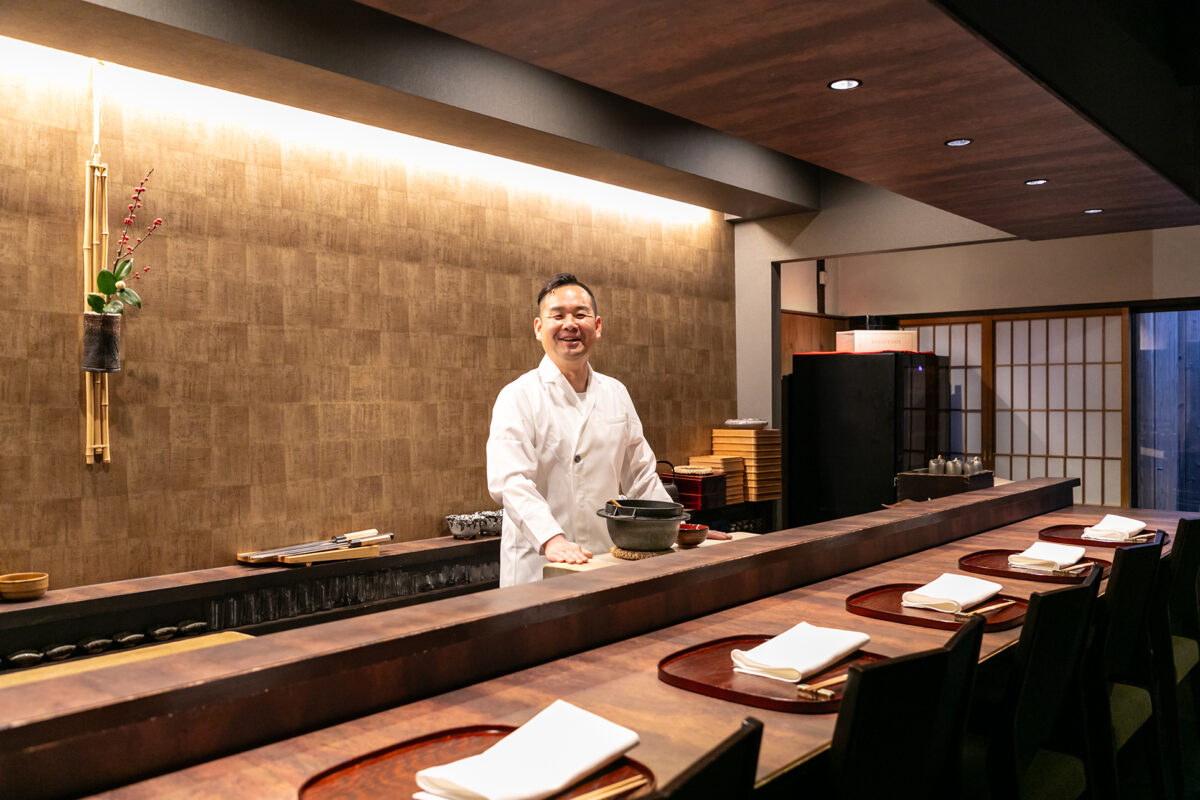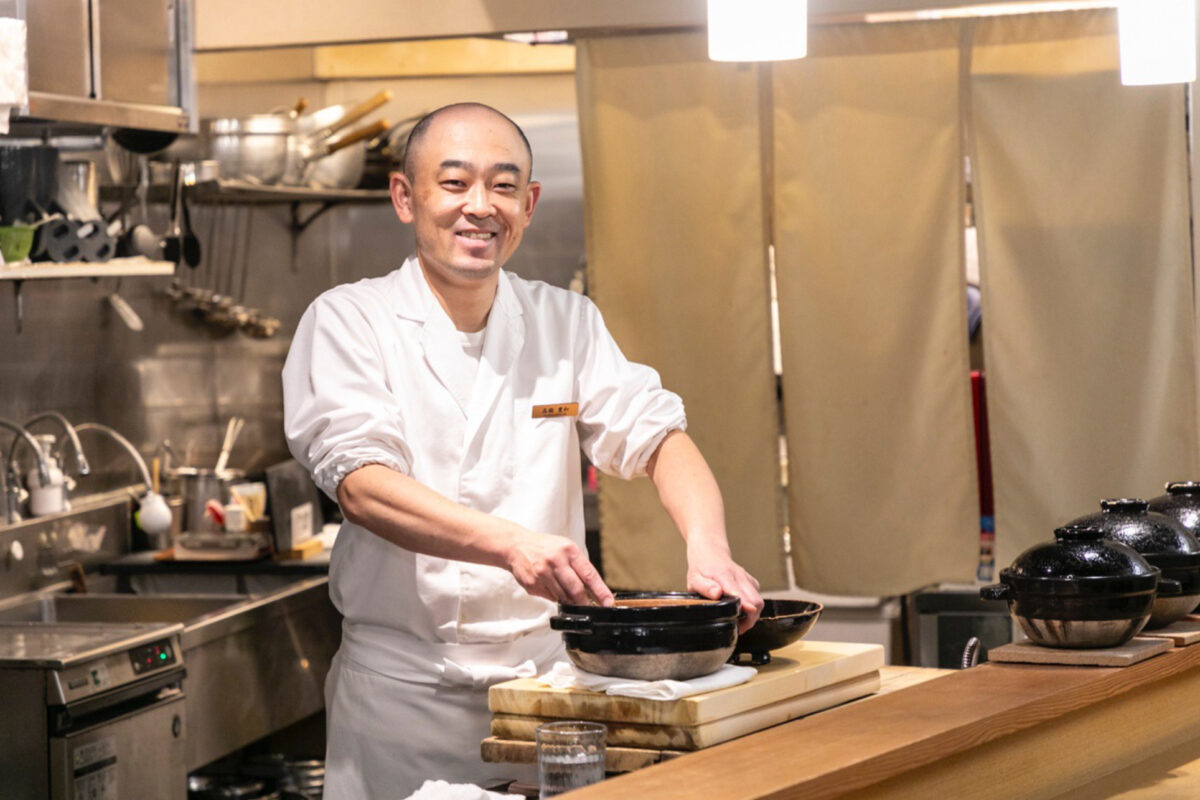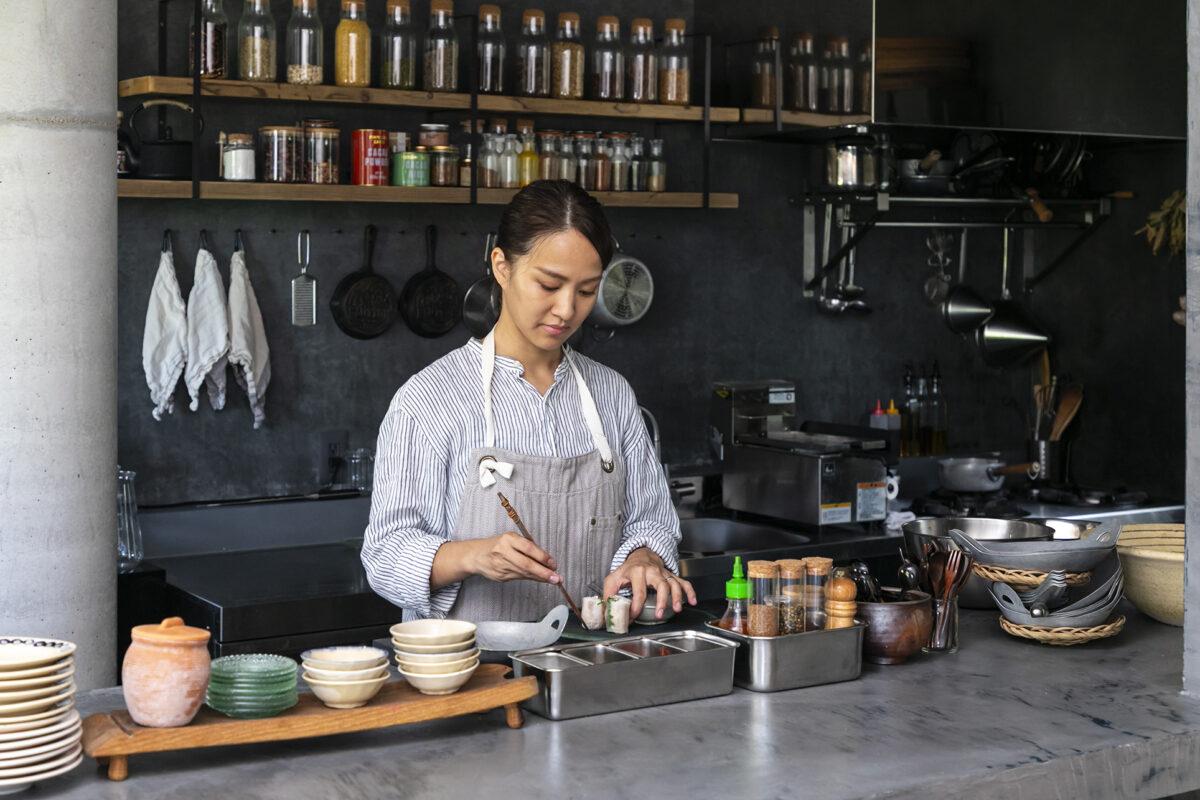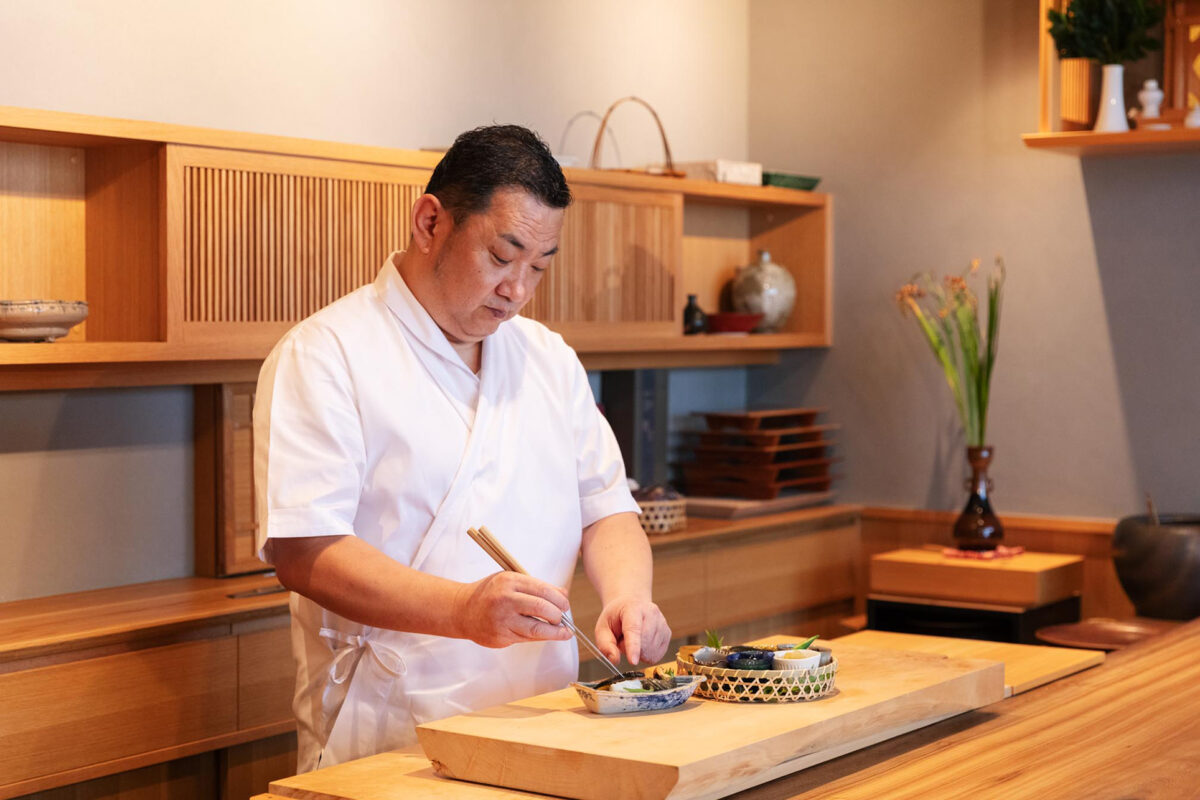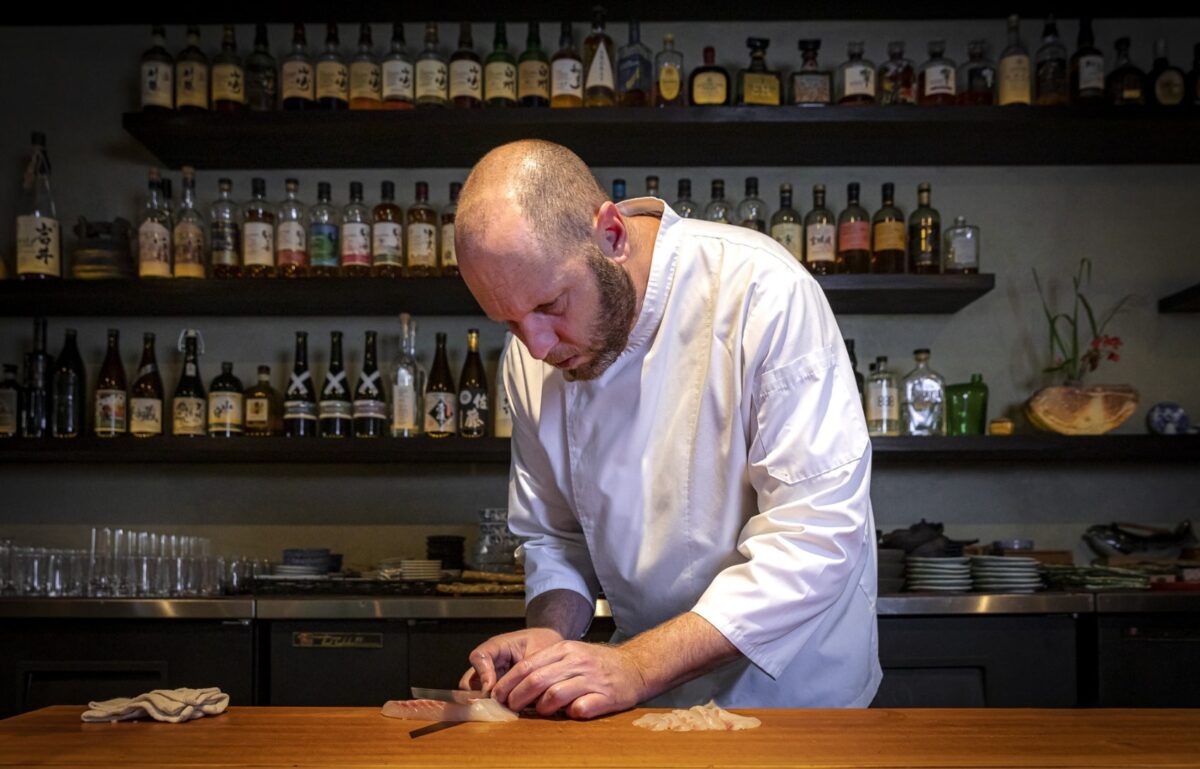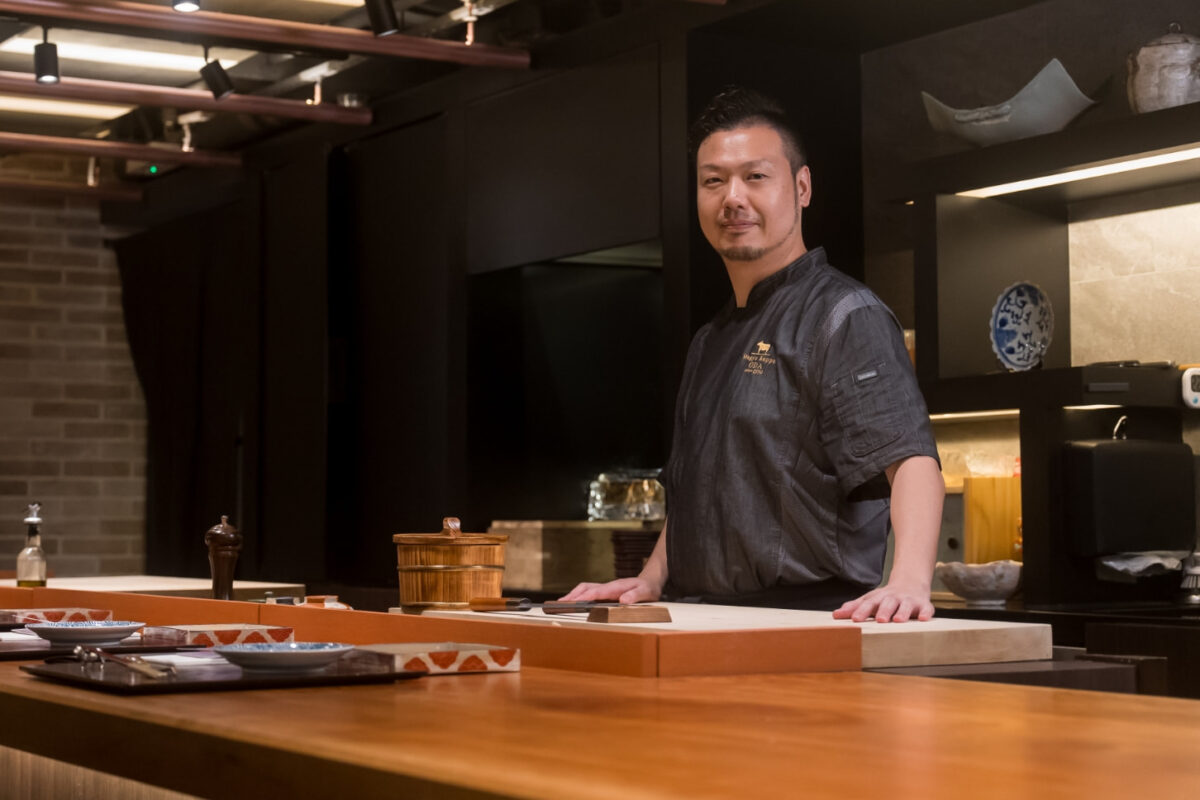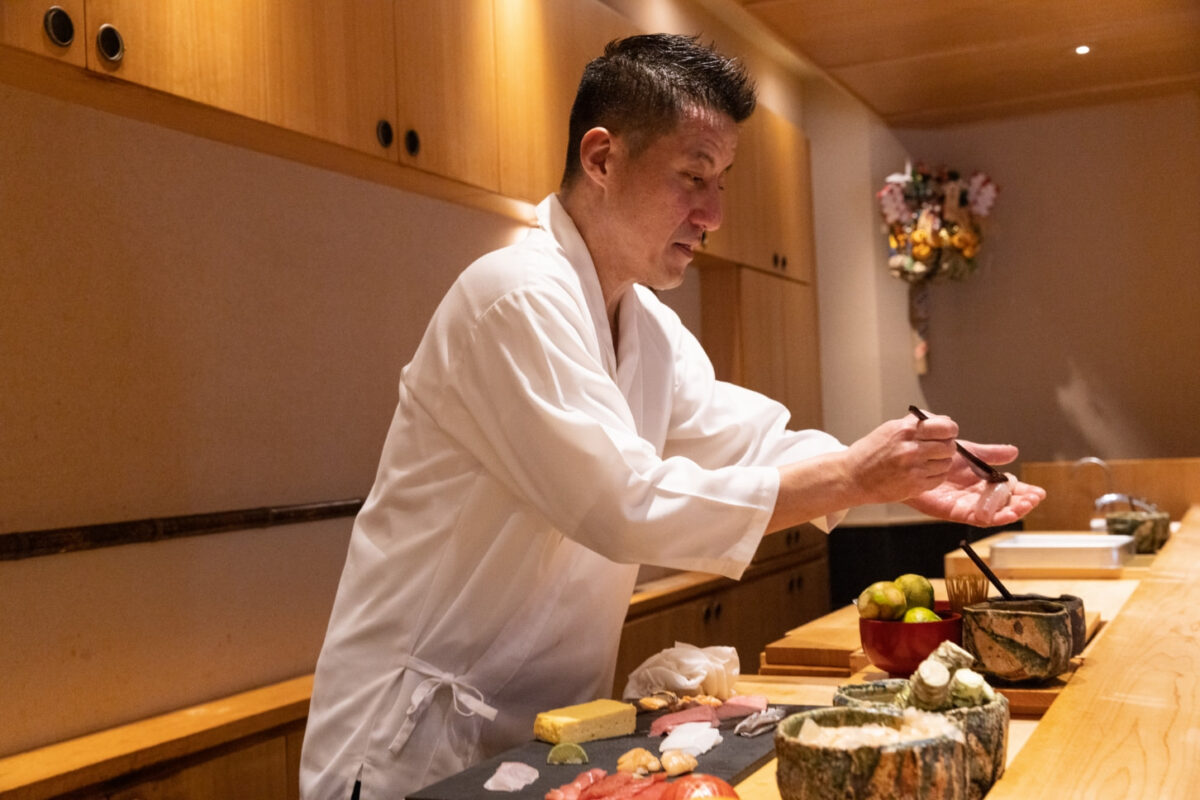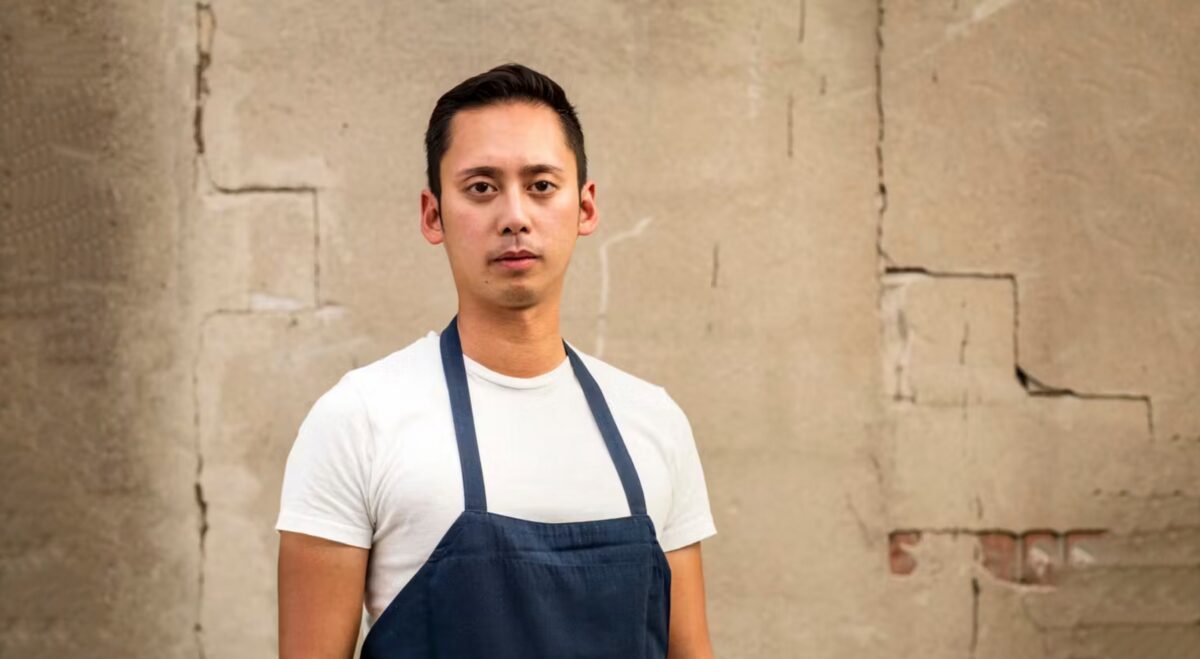Azabu Wakei
Savoring a sense of the seasons. Advocating Japan’s food culture through clay pot rice
Located in Nishiazabu in Tokyo’s Minato-ku, Azabu Wakei is a Japanese kaiseki restaurant whose multi-course dining experience offers a sense of the passage of the four seasons. Takemura’s first restaurant in his home prefecture of Ehime became the talk of the town in 2018, six years after it first opened, when it was the only Japanese restaurant in the prefecture to receive two stars in the 2018 Michelin Guide Hiroshima-Ehime edition. Even after relocating to Tokyo, in his main offering of multi-course menus that cherish the changing of the seasons, Takemura has continued to rely on carefully selected ingredients sourced from various parts of Japan. That includes Koshihikari rice grown in humic acid-enriched soil at Kayamori Farm, in which Takemura has complete confidence since his days as an apprentice. With his courses, which begin with an appetizer, and carry through to rice cooked in a clay pot, and onto dessert, Takemura is constantly exploring new approaches, offering not only delicious flavors, but a composition with a variety of tempo akin to exciting theater that is also a visual delight. The finishing rice dish is cooked in a clay pot, one for each party. As well as plain white rice, this dish is often served as takikomi gohan, which is rice seasoned and cooked in the pot with various ingredients. From the aromas that waft from the clay pot as the lid is lifted before the diners’ eyes, until the final lingering notes of the last grain of rice, this exquisite dish allows the diners to indulge fully in the potential that rice has to offer.

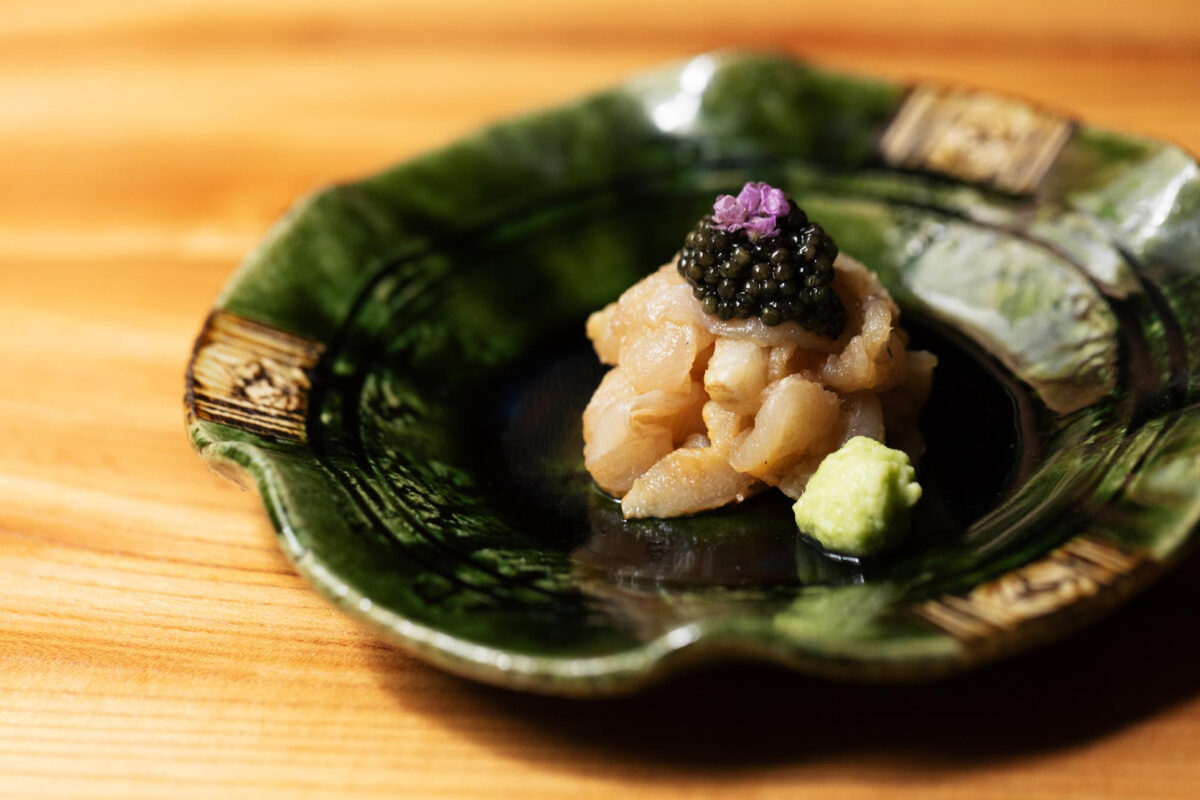
Not “making the most of the ingredients” but “making the most of the inherent flavors of ingredients”
An expression often heard in the world of cuisine is “making the most of the ingredients.” For example, when talking of seafood, if it is a sea bream, how do we make the most of the “flavor,” that is, the “characteristics,” of that fish.
After all, the seasonings we use on a daily basis, such as miso and soy sauce, are all ingredients that have been made by human hands. They are, of course, important elements of our cooking, but it is my belief that none of them can exceed the inherent flavors of ingredients found in nature. Having said that, I also believe that the potential of freshly caught, in-season fish differs from that of frozen fish. In the case of the latter, we can supplement its flavors by sprinkling it with salt to remove the odors and draw out its umami. Unlike other countries’ cuisines that layer flavors by pouring sauces on to the ingredients, the approach of Japanese cuisine is that seasonings only ever play a supporting role. This is not a matter of one approach being better than the other; those different approaches have evolved from the customs, climate, and culture of each country.
For Japanese chefs such as myself, what is important is, to be precise, not “making the most of the ingredients” but “making the most of the inherent flavors of the ingredients,” each and every one of them. It is with this thought constantly in mind that I continue to create my dishes.
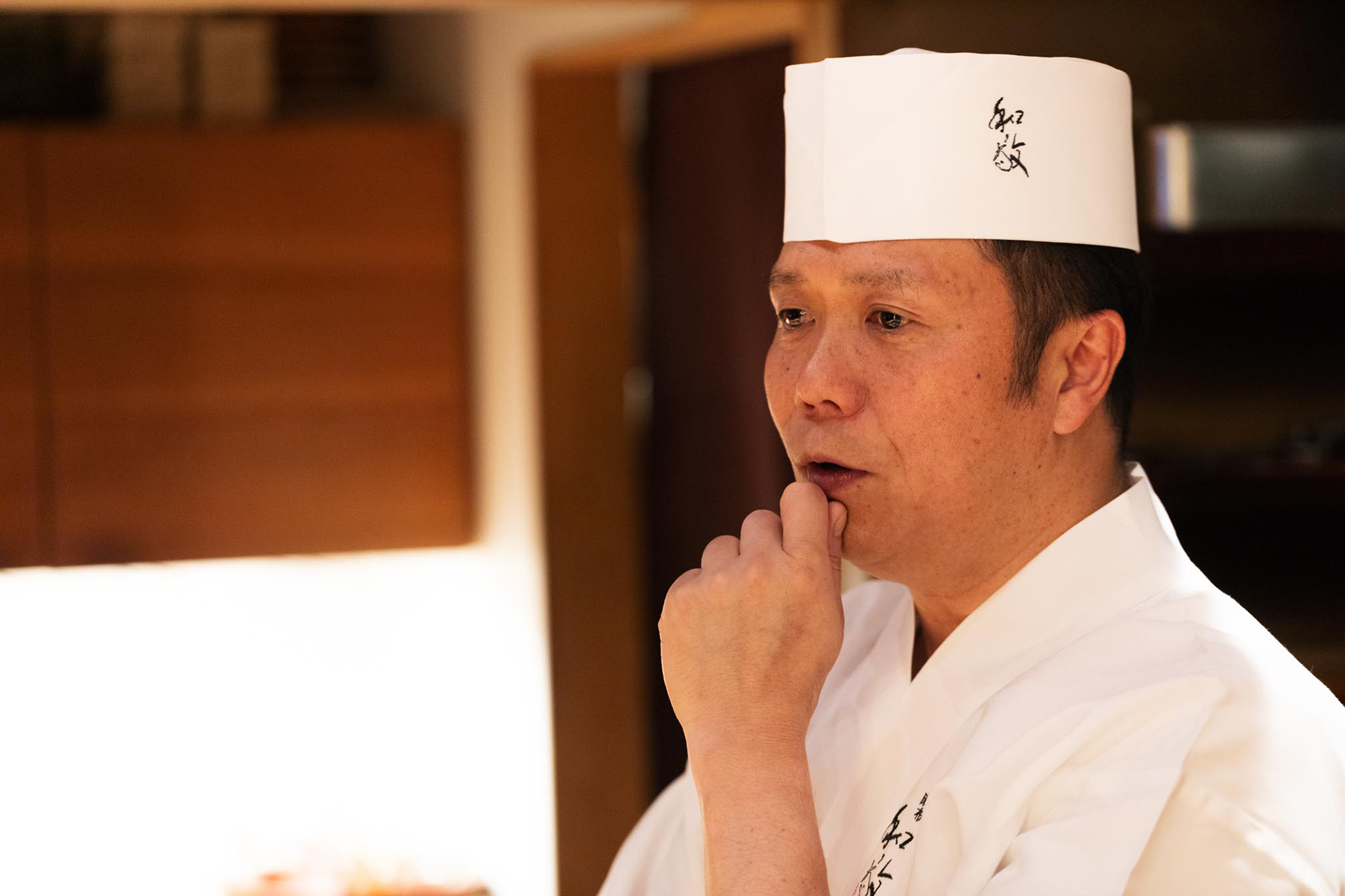
Perspectives on Japanese cuisine and its blind spot
I was born in Japan, and ever since I decided to make Japanese cuisine my calling, the attitude of “learning” about Japanese ingredients and culture was drummed into me by the head chefs under whom I trained at Waketokuyama.
When Japanese people decide that they want to cook the food of another country, such as French, or Italian, or Chinese cuisine, their fundamental entry point is a willingness to first learn about the climate, customs, and food culture of that country. Whether they then travel to that country to study or they recreate it here in Japan is up to the individual, but that common awareness that they have to learn lies at the core of their undertaking. And yet, strangely, when it comes to studying Japanese cuisine, I get the feeling that, while they may study the recipes and the techniques themselves, not many people seek to learn anew about the historical background and culture behind those recipes and techniques, to digest them and interpret them, before attempting to express them by trial and error. Living in our own country and taking it for granted, feeling that we already know all we need to know and unconsciously neglecting that day-to-day study—this is a blind spot of Japanese cuisine. With rice, in particular, because it is such an indispensable part of Japanese people’s every day, there are people who leave that freshly cooked rice sitting in the rice cooker or pot without loosening the cooked grains despite their consciousness to cook rice well. Why is that step necessary? What can we do to make it taste better? The Japanese people need to learn more about their own country’s culture and communicate that to people in other countries. My sense is that it is precisely by delving deeper into those inner workings that the possibilities for what we can do now and what we can express will expand.
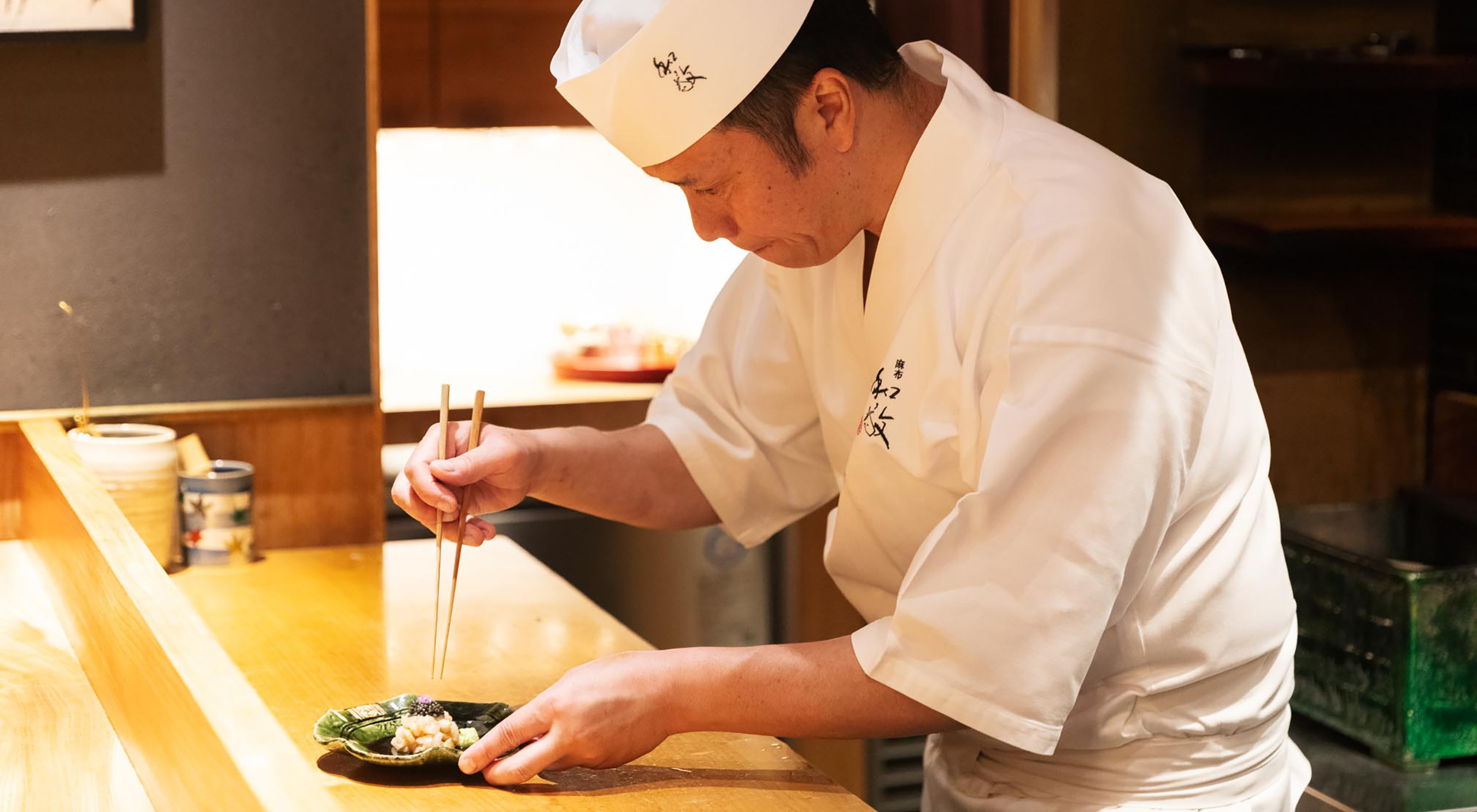
Approach and performance according to the season
At the restaurant, our courses consist of 10 or 11 dishes, starting with the appetizer, then a soup, a sashimi dish, two or three seasonal dishes, and clay pot rice, before finishing with a dessert. I start by thinking about what I would like to eat, based on the season’s ingredients, and let my imagination expand from there. For example, in this kind of climate and humidity, a refreshing appetizer enjoyed with a cold drink would make a delicious start. After gently warming the body with a soup, then enjoying a few bites of fresh sashimi to whet the appetite, the sense of a gorgeous feast would be heightened with fish and meat dishes, leading up to the clay pot rice. While incorporating my own interpretation into each dish, I make sure that I am not exceeding the boundaries of Japanese cuisine, and in a three-part composition of “from appetizer to soup,” “from soup to sashimi,” and “from sashimi to other dishes and onto the clay pot rice to finish,” I assemble the course, considering the balance of premium ingredients and staging a sense of luxury.
Incidentally, on occasion, we actually serve a dish called “iimushi,” which features glutinous rice, after the appetizer. This dish, which is frequently found in kaiseki cuisine, involves soaking glutinous rice well, topping it with seasonal vegetables or seafood, and steaming it wrapped in bamboo peel or leaf. Its position on the menu is not so much a rice accompaniment as a dish in its own right, one that has its own specific role to play, in that it settles the stomach by adding a small amount of carbohydrates to an empty stomach. In former times, this was often achieved by adding a single piece of sushi on the side of the starter course.
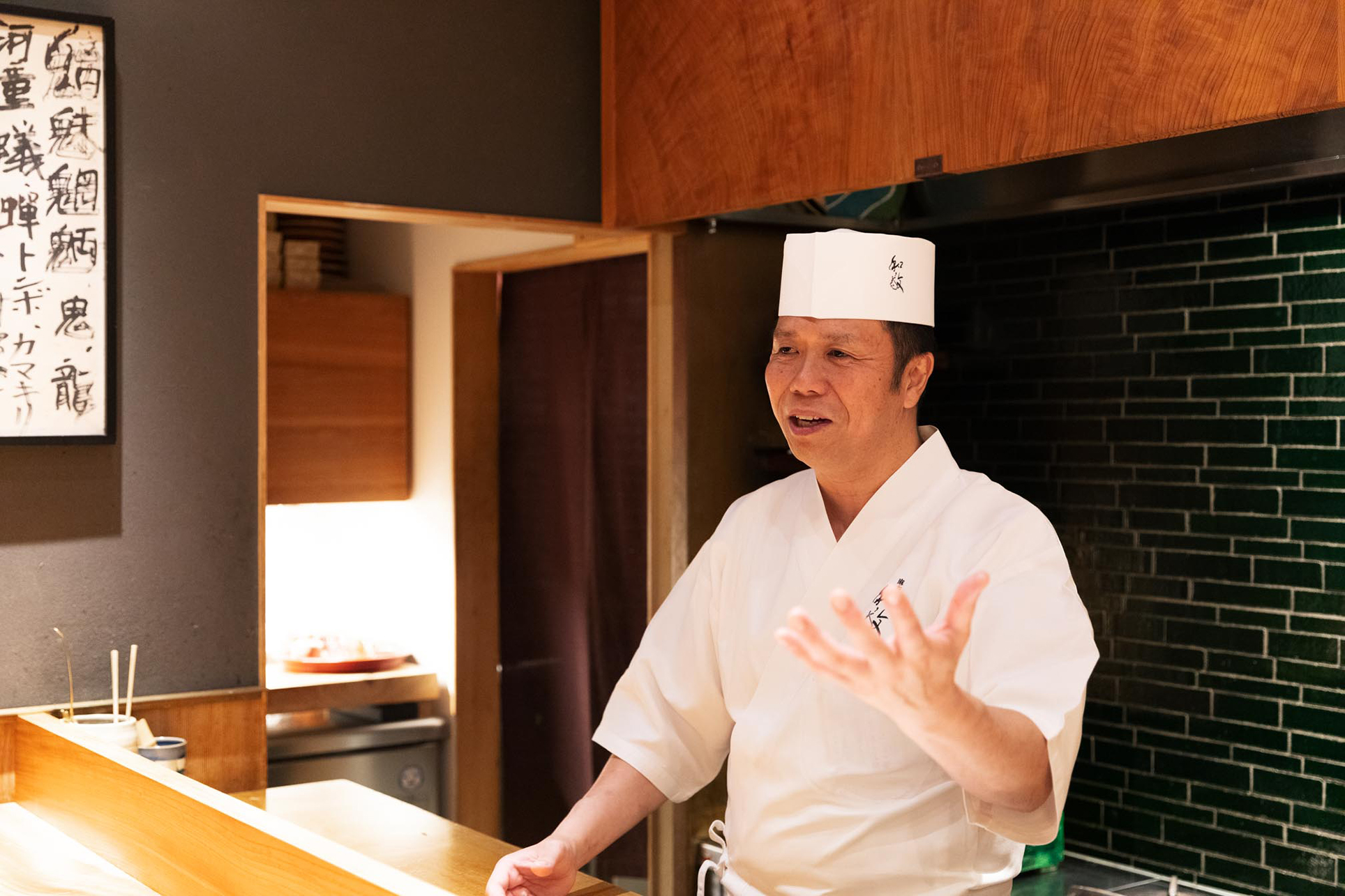
Clay pot rice to finish the meal is a delightful part of Japan’s food culture
We cook the clay pot rice to finish the meal for each dining party, checking the progress of their meal and timing it so that we can serve it just cooked. In the old days, kaiseki diners sat at low tables on tatami floors, so the rice would be cooked in the kitchen at the back of the restaurant in huge kettles and served at the table in wooden receptacles. In Tokyo, however, the counter style of kaiseki dining emerged about 40 years ago. It was not very well accepted at first, but these days, with so many guests from overseas, I would say that this style, in which diners can relax without having to take off their shoes, has probably become mainstream. We were serving clay pot rice in this style even in my days as an apprentice, and I have always felt that the finishing dish of rice gives the diners a sense of happiness and relaxed peace of mind at the end of their meal. With Italian cuisine, the pasta is served in the middle of the course, and French cuisine has bread on the side, but the concept of ending the meal with rice is certainly a food culture that is unique to the Japanese. A finish that arrives subtly with a sense of relief, but that still has its own presence and lingering notes. That is the position that the finishing dish of clay pot rice occupies in my food. Ever since my apprentice days, I have used Koshihikari rice from Kayamori Farm in Kamo, Niigata Prefecture. This Japanese cultivar is grown with a method known as humic acid cultivation, which uses organic acids secreted from the roots of plants to cleanse and activate the soil. Although a short grain, it has viscosity and is distinctive for its moderate sweetness. The smallness of the grains is well suited to serving as plain white rice as well as takikomi gohan. The taste sensation when mixed with other ingredients and the balance of sweetness when you bite into the rice are sublime. Instead of asserting the rice’s character alone, Kayamori Farm’s Koshihikari blends in with any ingredient and can be enjoyed to the last bite. Because I serve takikomi gohan so often, it has become an indispensable part of the food that I serve as “rice that has the aroma of the season.”
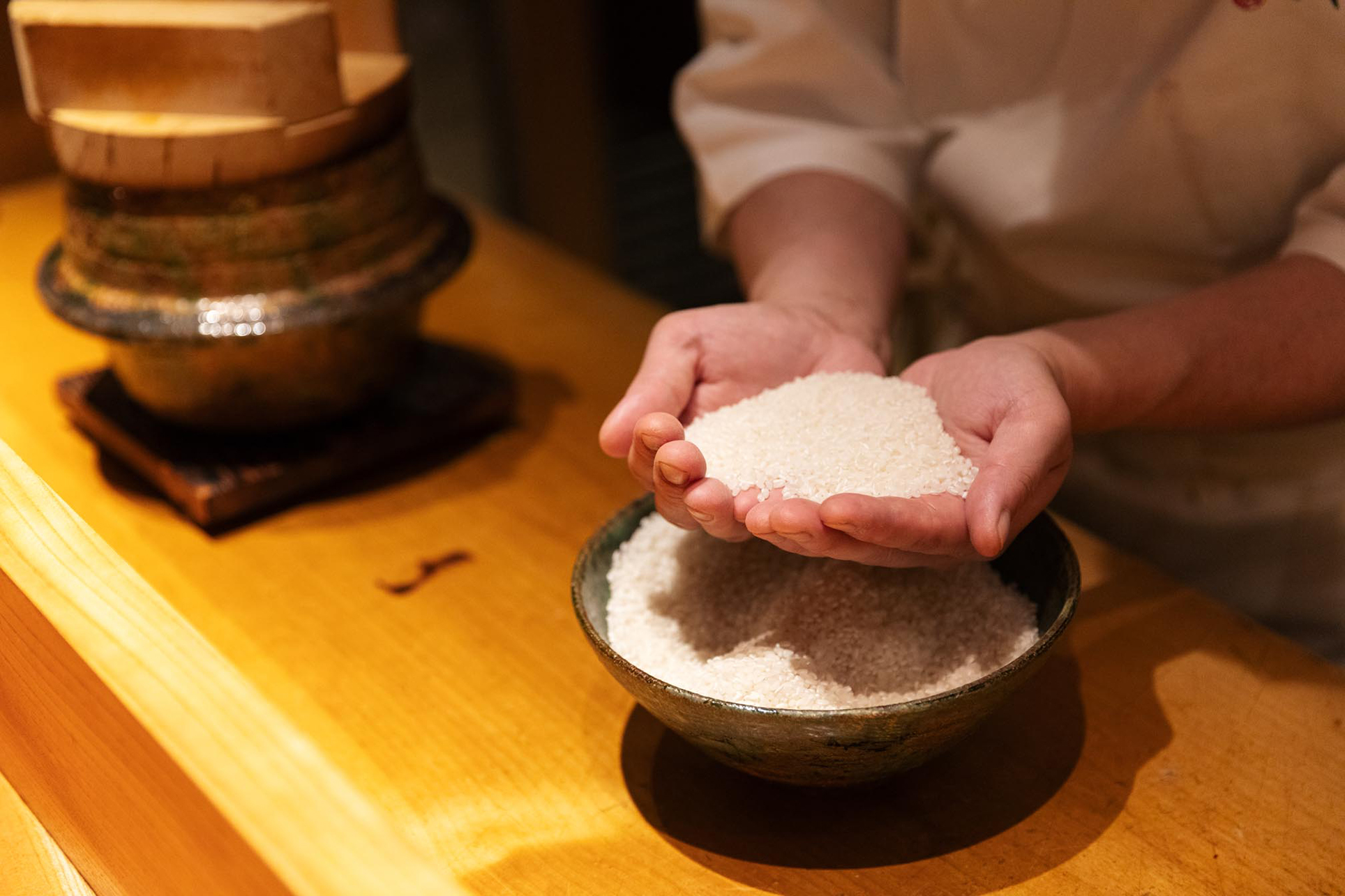
Japanese rice’s presence in allowing the full enjoyment of Japan’s food culture
One way of eating white rice cooked in a Japanese clay pot is called “niebana.” This is similar to the al dente of Italian pasta. It has a highly aromatic flavor that can only be experienced in a single moment when the rice is about two minutes from being completely cooked (about 90-95% cooked), when the grains still have a bite in the center, but the outside is soft and fluffy. At my restaurant, when we serve white rice, we always have the diners try it at this niebana stage, then let the rice steam again for those last few minutes and serve it just cooked. The reaction from our overseas diners varies, but when they smell the aroma that spreads in the instant that the lid of the pot is lifted and see the glistening shine of the grains of rice, many of them give delighted cries of “Beautiful!”
Originally, in Japanese history, rice was a luxury food. How best to value what was once a luxury ingredient and enjoy it to a superlative degree—that truly is one aspect of Japan’s food culture that we should be communicating to the world. The recipe presented here is for a simple takikomi gohan cooked with sea bream. There are no difficult techniques involved. Simply wash the rice, strain it into a sieve and leave plenty of time for the grains to absorb the water. Just following these steps will allow you to enjoy more delicious, aromatic Japanese rice than you can imagine.
For the Japanese people, rice is a balm to the spirit and a food that has integral worth in our lives. Instead of taking that worth for granted, as a chef of Japanese cuisine, I want to convey it to my diners.
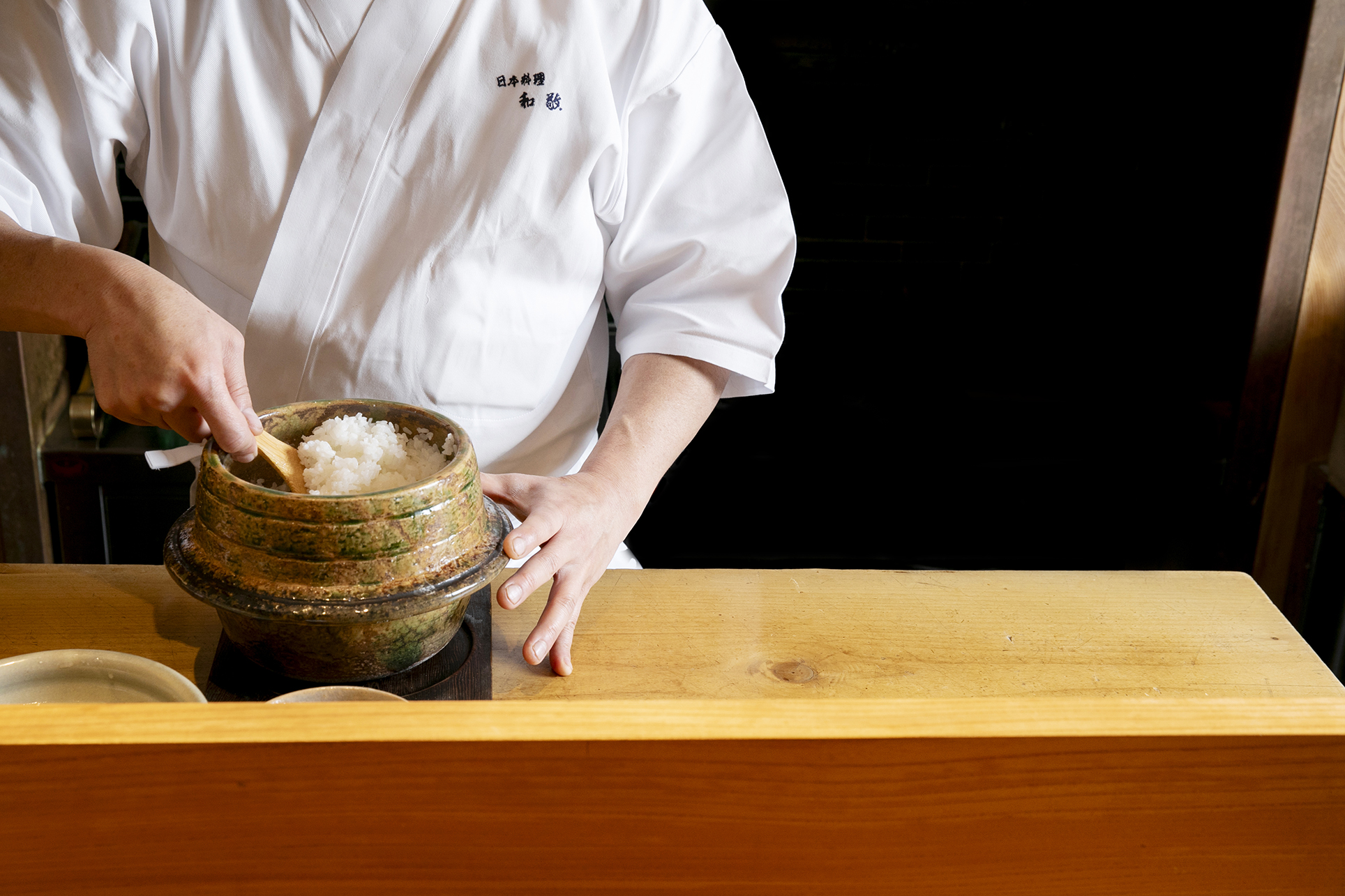
Recommended dish
Straw-grilled Conger Eel (one of the dishes in the multi-course menu) 穴子の藁焼き(コース料理の一品として提供)
For the two or three kinds of sashimi served after the appetizer, instead of serving an assortment all at once, we serve it in three parts. As well as a simple serving of raw fish, we vary our approach to factors such as temperature, aroma, and texture. In this dish, seasonal conger eel is grilled over flaming straw flames to give it aroma, before being torn into thin strips and dressed in mellow Tosa soy sauce. Caviar is then placed on top as an accent. The texture of the delicately aromatic skin and flesh of the conger eel unites with the saltiness of the caviar, leaving exquisite afternotes lingering on the palate.
